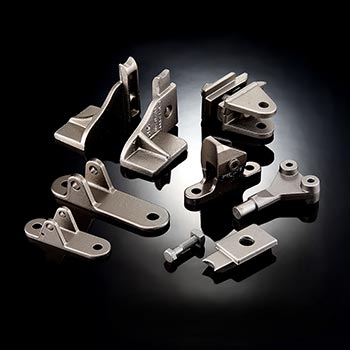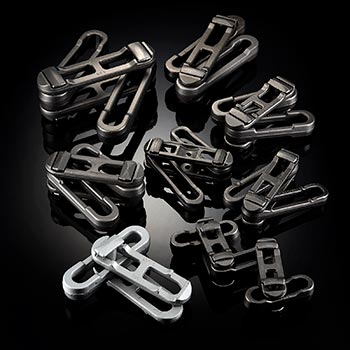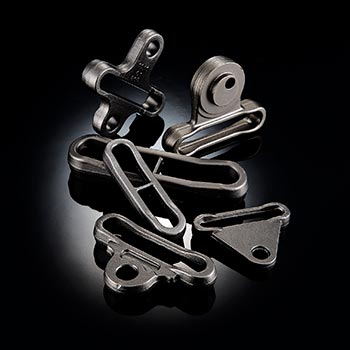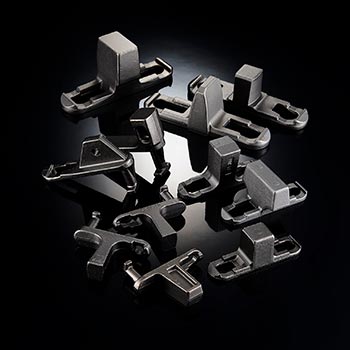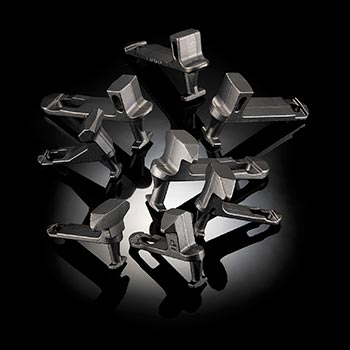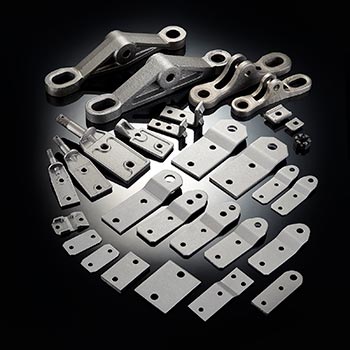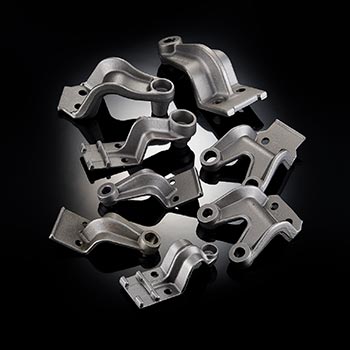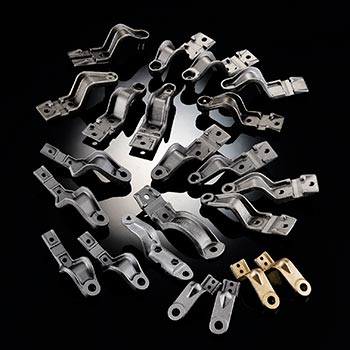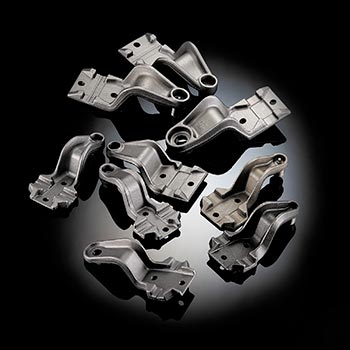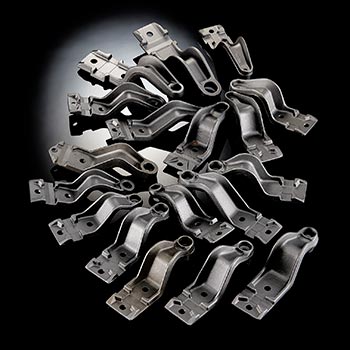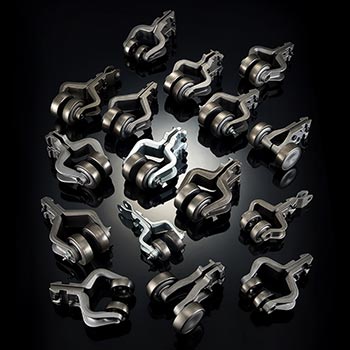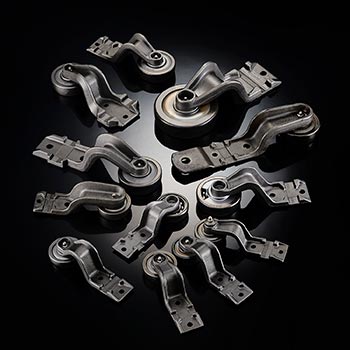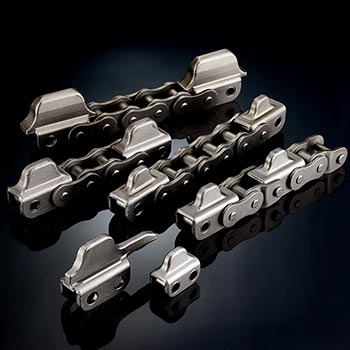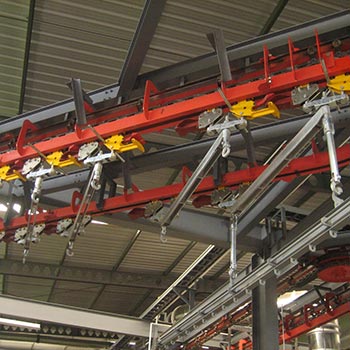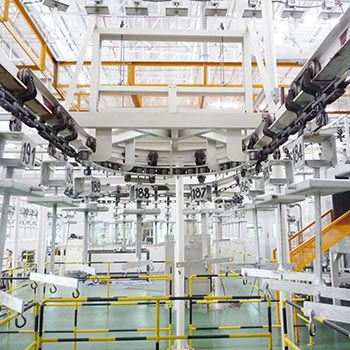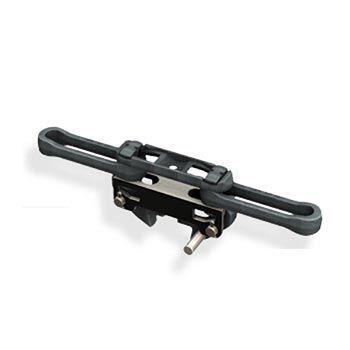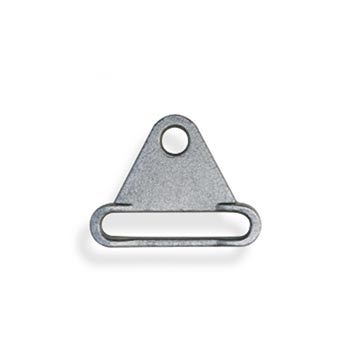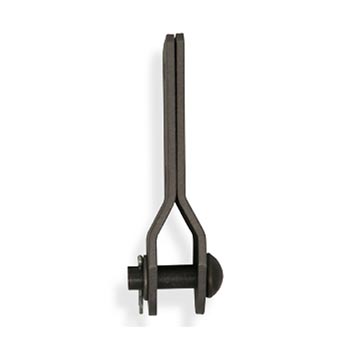WORLDWIDE

PRODUCTS
Home > PRODUCTS > Conveyor Chain > Drop Forged Rivetless Chains
Drop Forged Rivetless Chains
The Drop Forged Rivetless Chain processing includes hot & cold forging, punching, and fine chain-pitch machining. Advanced heat treatment processes are applied to improve steel hardness, strength and toughness. This further increases resistances against wear and tear, corrosion, impact and load stress.
We incorporate a variety of steel materials and refined processing techniques to minimize chain elongation and extend the product’s lifespan. All of our chains can be customized to suit the customer’s requirements.
Available options for the material include:
-SAE1045 (medium carbon steel)
-SAE4140 (chromium molybdenum alloy steel)
-SAE1552 (medium carbon high manganese steel)
-SAE8640 (nickel chromium molybdenum alloy steel)
-SUS304 (heat-resistant stainless steel)
We offer two types of caterpillar drive chains: the lambda chain link (Standard) and D-type chain link (Heavy-duty).
We incorporate a variety of steel materials and refined processing techniques to minimize chain elongation and extend the product’s lifespan. All of our chains can be customized to suit the customer’s requirements.
Available options for the material include:
-SAE1045 (medium carbon steel)
-SAE4140 (chromium molybdenum alloy steel)
-SAE1552 (medium carbon high manganese steel)
-SAE8640 (nickel chromium molybdenum alloy steel)
-SUS304 (heat-resistant stainless steel)
Surface Treatments
We provide a variety of surface treatment processes. Including; yellow zinc, mechanical zinc plating, hot-dip galvanizing, blackening, pickling, anti-rust oil, electroplated white zinc, and other surface anti-rust processes.Side Link Pusher Dog
Side link pusher dogs are forged components and are used for drop forged rivetless chains. Their main function is to engage with the Front Flopper Dog of the leading free trolley on the lower track of the Power and Free Conveyor System.Center Link Pusher Dog
This products main function is to connect Pusher Dogs in the conveyor system. It can connect with one Pusher Dog or one on both sides of the Center Link.Center Link Attachment
This series of forged or casted parts are mounted on the center link of the rivetless conveyor chain, adding a variety of different functions and applications to the center link.Extended Pin
This product is a forged part. Its function is to connect the side link and the center link to fixed chains. It can also be combined with different types of trolleys, hangers, and pusher dog extensions to provide alternative conveying functions.Power Trolley
Power trolleys are an important option during the design phase of the conveyor equipment. The main function of a power trolley is to support the chain, bear the weight of hangers, and the conveyor equipment parts such as pieces in work. Bearings, hangers, and forged brackets are the main components of a power trolley.Forged Bracket
The strength of the forged bracket indirectly determines the lifespan of the conveyor system. To ensure that the chain runs according to the track design route, the forged bracket is pulled by the chain and runs along the track. It needs to bear the combined force of the chain tension when turning vertically and horizontally. The hanger is made of high-strength carbon steel and can be divided into two types: overhead and ground. Our forged brackets are forged from high-strength carbon steel. The brackets are divided into two types: Overhead and Inverted.Hanger
A variety of hanger styles and accessories are available to suit the design of the conveyor chain equipment. Hangers do not affect the operation of the chain. They are used where vertical lifting of weight is required, and the load must be directly above or below the trolley wheel set. If the load is heavy, we can use the load bar to connect more than 2 sets of trolley wheels, and equally distribute the load over the pair of trolleys. This will suspend the load at the center of the load bar to equalize the loading distribution over the trolley wheels.H Attachment
This is a universal auxiliary hanger accessory. It is made of a combination of two metal plates and which is suitable for most types of hooks, racks, and trays.I Attachment
This accessory serves as a spacer and does not carry work pieces on the trolley.B Attachment
This accessory is a formed by hot forging and has a thread stud. It has various applications including attaching trolley pairs to load bars.C Attachment
This accessory is used to support lightweight work pieces within a trolley.Swivel Hook
The swivel hook can be forged or casted. It allows the load to be positioned at a 90-degree angle. It allows operators to move the product in a full 360 degrees while on the conveyor system. It is used with H attachments.Overhead Trolley Load Bars
Casted Overhead Trolley Load Bars are used in conjunction with the two trolley wheels and B attachments. The main purpose is to increase the load capability over the trolley wheels.I-Beam
I-Beam tracks provide steadying support for trolley wheels so they can move smoothly with the chains.Drive Dog & Caterpillar Drive Chain
The pin assembly can be constructed using Riveted Pins or Cotter Pins. The riveted type is generally used for heavy loads, while the cotter pin allows operators the ease of replacing the chain links or chain dog by themselves.We offer two types of caterpillar drive chains: the lambda chain link (Standard) and D-type chain link (Heavy-duty).
Roller Turn of Roller
The rollers can assist the trolley wheels by providing outward support at the turning points and can align and stabilize the trolley while cornering. The rollers are installed on the horizontal segment bar of the roller turn frame. They are equipped with grease nipples for convenient lubricating and continuous maintenance.Horizontal Roller Turn
Horizontal Roller Turns come in different specifications such as 30-degree, 45-degree, 60-degree, 90-degree and 180-degree angles according to customer design requirements. The function is designed to keep the trolley wheels and chains passing through the horizontal turns smoothly, this assists trolley wheel sets maintain stability while traveling vertical downward to the ground.Horizontal Traction Wheel Turn
Horizontal Traction Wheel Turns keep trolleys and chains steadily in an upright position as they travel downward to the ground while passing horizontal turns. Following customers’ requirements, we provide different angles of 30-degrees, 45-degrees, 60-degrees, 90-degrees, and 180-degrees. Horizontal Traction Wheel Turns can be utilized in hazardous working environments such as heating furnaces area, heavy-duty dirty areas, corrosive environments, or other high temperature area.Caterpillar Drive Unit
Generally speaking, the drive unit is placed in the maximum tension and alongside a horizontal straight run of track. We suggest that the drive unit could be placed 100-120 meters away from Take-Up devices, these devices will work alongside the Drive Unit to enhance the system performance.Take-Up Unit
Using these units can enhance the longevity of operating chains. In order to ensure smooth production line operation, a take-up unit pulls on the chain and adjusts the chain as it leaves the drive unit. They also reduce the possibility of chain blockages while reducing wear on the chain.Power & Free Conveyor System
The power & free conveyor system is the side link pusher dog interact with the upper conveyor chain in power rail movement in which to achieve accumulation force and release function for free rail of carriers. Power & free conveyor system is consists of the front carrier, connector pin, middle carrier, load bar, and a rear carrier...
1-21 of 21


